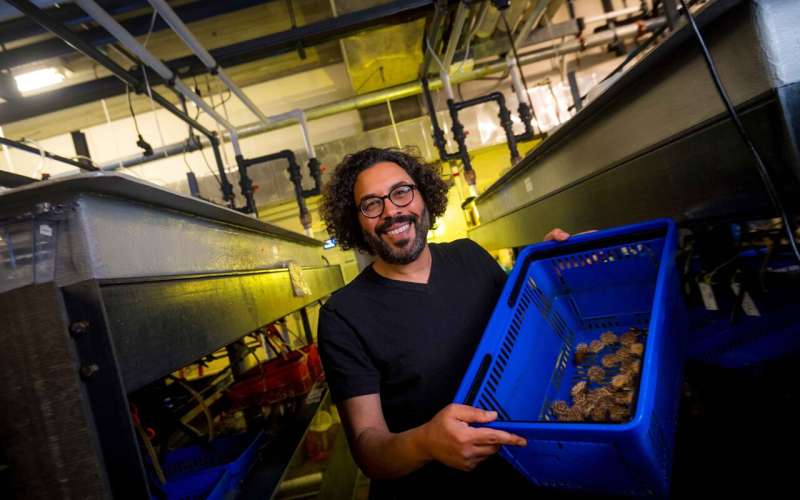Genetics breakthrough in sea urchins to aid in biomedical research

Marine biologists at Scripps Institution of Oceanography at UC San Diego have created a line of sea urchins whose genetic makeup is fully mapped and can be edited to study human disease genes. The creation of these new research model organisms will accelerate the pace of marine biomedical research.
Sea urchins, like fruit flies or lab rats, have been an organism used in research for more than a century. Even before this breakthrough, sea urchins led to the discovery of a protein family known as cyclins that guides division of cells. That knowledge went on to become the basis of current cancer treatments and earned cyclin's discoverers a Nobel Prize.
Now Scripps marine biologist Amro Hamdoun and colleagues have taken this research to a new level by developing lines of sea urchins that can be used as genetic models using the gene editing technology known as CRISPR. The modified sea urchins are derived from the fast-growing species, Lytechinus pictus, also known as the painted sea urchin.
The team describes its results June 6 in the journal Development.
Hamdoun said the new sea urchins could serve as a new workhorse organism in marine biomedical research, capable of being cultivated to adulthood in four to six months at room temperature. Presently many species of sea urchins are used around the world to study the developmental origins of diseases, and the effects of pollutants on human and marine health. But few can be grown in the lab and genetically modified like other lab animals. Having this new "genetically enabled" urchin could dramatically enhance the efficiency, reproducibility, and utility of those studies.
"Sea urchins have long been a favorite model organism for marine biologists, but they have been bottlenecked by not having stable genetics," Hamdoun said. "This work breaks that final barrier. This genetically enabled urchin will be an important resource for the large community of researchers, who use urchins in their labs."
The research was an unexpected silver lining from the COVID pandemic which impacted operations in research labs around the country for more than two years. In the case of Hamdoun's lab, team members developed a sense of mission that motivated them to continue with the work.
"It gave us something positive to focus on," Hamdoun said. "The team spent two years intently focused on solving the barriers to making a genetically enabled sea urchin. Once we figured out how to make the precise modifications we wanted, we next had to figure out how to efficiently culture the urchins and select the modified animals. It is a real testament to the group's dedication that they accomplished this despite the adverse circumstances. I like to think that while many people were home growing cool things like houseplants or sourdough starters, we were also growing something interesting, but it was a biomedical research animal."
More information: Himanshu Vyas et al, Generation of a homozygous mutant drug transporter (ABCB1) knockout line in the sea urchin Lytechinus pictus, Development (2022). DOI: 10.1242/dev.200644
Journal information: Development
Provided by University of California - San Diego



















